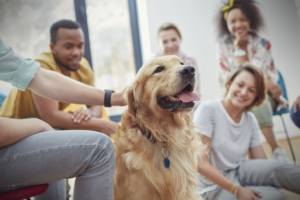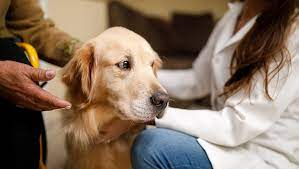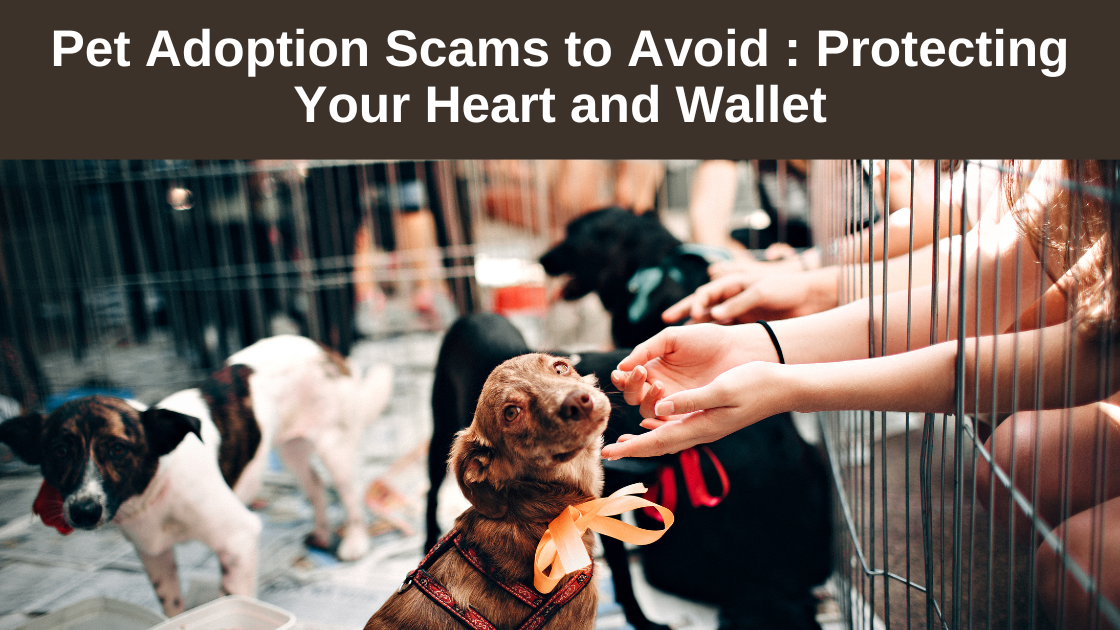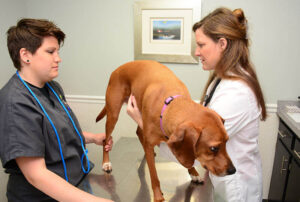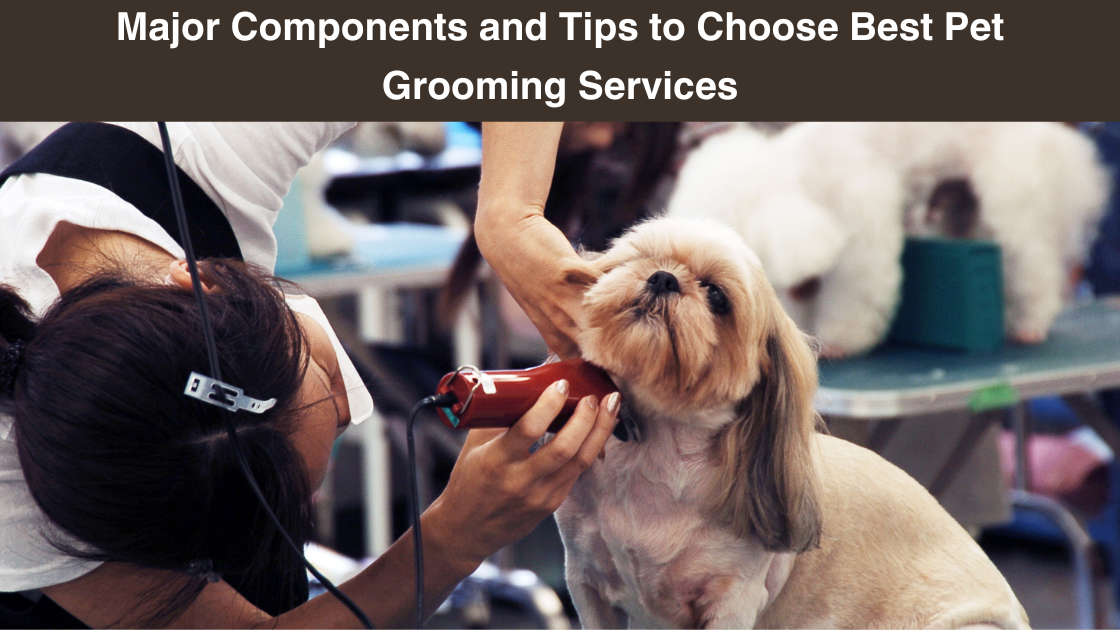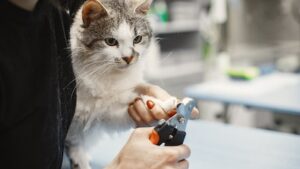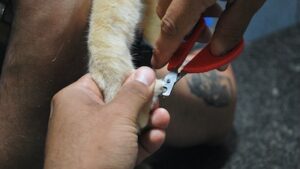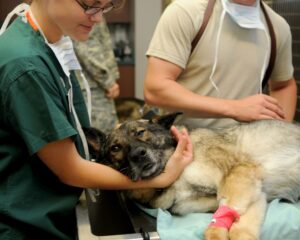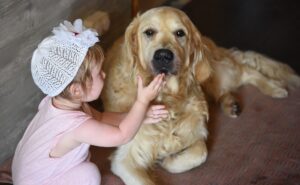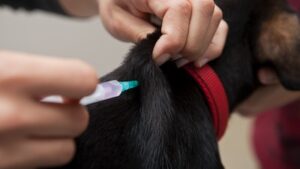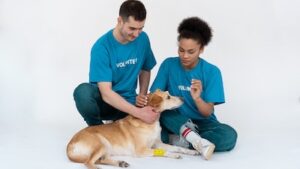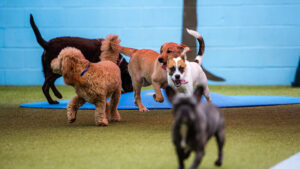Taking a stray or abandoned animal into your home and raising it as a member of the family is a rewarding experience on many levels. However, the pet integration process can be tricky sometimes.
Table of Contents
Introduction
Integrating Pets takes forethought, patience, and understanding. In order to ensure a smooth transition and nurture harmonious relationships among all furry members of the household, this article will walk you through the steps of the gradual integration of an acquired pet into a family with existing pets.
Step-by-Step Guide for Pet Integration
Bringing a new pet into a home with existing pets is a delicate process that needs plenty of thought and planning. By doing your research and making a plan, you can make the pet integration process easier for your current pets and the new addition. The steps for gradual integration are outlined in detail below.
1. Look at Your Options Carefully
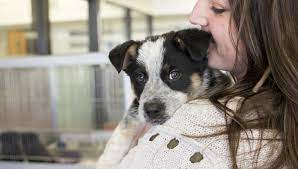
Before bringing in new pets, it’s important to take stock of the ones you already have and figure out what they require. It’s crucial to consider the personalities, habits, and routines of all of your present pets before adding a new one to the family.
When you are looking at your options for integrating pets, it’s important to think about their species, breed, age, size, and temperament. For instance, a hyperactive puppy can be too much for your mellow older dog. A similarly enthusiastic and rambunctious kitten could be too much for a timid cat.
It’s important to spend time meeting possible new pets, so it’s a good idea to visit shelters, rescue organizations, and breed-specific rescues. Engage with them to learn more about their character and watch how they react to other animals. Inquire with the shelter’s employees or the foster parents about the pet’s social habits.
2. Make a Secure Retreat
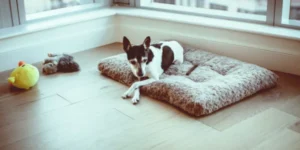
It’s important to make sure your new pet has a secure and pleasant environment to settle into before you bring it home. Set aside some space where the new pet may call its own, such as a spare bedroom or a secluded nook.
To smooth the pet integration process, put everything the new pet will need to live comfortably in this area. Make sure they have clean water to drink, healthy food to eat, clean bedding, and fun enrichment toys to play with. Provide a litter box to foster potty training in your cat.
Make sure your new pet has plenty of places to hide and curl up in their new home. Put a comfy blanket or bed in a peaceful nook and surround it with cardboard boxes and underground tunnels. If the new pet is feeling anxious or threatened by the presence of other animals, it can take refuge in one of these hiding places.
3. Have Quarantine and Veterinary Examining

Schedule a veterinary checkup for your new pet before starting the pet integration process. Take it to the doctor so you know it’s healthy and up-to-date on vaccines. Having your pet checked out by a vet is a good idea regardless, but it’s especially crucial if you got them from a shelter or rescue.
You should also think about putting the new pet in quarantine for a short time for gradual integration. During the quarantine period—typically approximately two weeks—the new pet is isolated from the household’s other animals. This safety net helps ensure that the adopted pet doesn’t spread any infections or parasites it may have picked up on its travels.
Keep a watchful eye on the new pet’s health and behavior throughout the quarantine period. Get in touch with your vet right away if you have any health concerns. Quarantine may seem like an unnecessary hassle, but it can save your current pets from getting sick.
Finally, when going forward with the pet integration process, preparation is essential. You can lay the groundwork for a gradual integration by learning as much as possible about the new pet, providing a secure environment, and assuring its health with a vet check and quarantine. Following these guidelines will make life easier for you and your pet family members.
4. Have Gradual Integration with Pre-Existing Pets
The dynamics of future interactions between your new pet and your current furry pals may be determined by how you introduce them at first. The integration process of a new pet into a family with existing pets depends in large part on the steps taken at this stage. In this part, we’ll take a closer look at the fundamental procedures involved in making that first impression.

4.1. Exchange of Odors
The sense of smell is crucial to the way in which animals identify and communicate with one another. You can lessen the likelihood of territorial disputes between your pets by introducing them gradually through a scent exchange. By doing this, your old and your new pet can form a pleasant association when you smell each other in the future.
To ensure smooth and gradual integration, do the following:
- Get a soft cloth or piece of bedding that smells like the new pet.
- Put the cloth or blankets close to where your other pets sleep. So, they can check out the new smell at their own pace.
- Gather clothes or blankets that smell like your other pets and put them in the area where the new pet will live.
Through repeated scent exchanges, all dogs will get used to the smell of their new friend, making them feel less scared at first and more comfortable.
4.2. Visual Presentation
It’s best to see the animals interacting before you really put them in the same room together. This stage lets them get a feel for each other’s presence and reactions before they actually interact, which can help ease any nerves.
To ensure smooth and gradual integration, do the following:
- Put a baby gate or a door with a crack between the new pet’s area and the area of the other pets.
- Let the pets see each other for short amounts of time through this barrier.
- Watch what they do with their bodies. A good start can be seen in signs of curiosity, interest, or even indifference.
This visual introduction helps the pets get used to sharing space and presence, which sets the stage for them to engage more directly in the future.
4.3. Managed Exchange
When it appears that the animals in each group are beginning to feel at ease around one another, controlled face-to-face interaction can begin. Here, we utilize leashes to keep everyone safe and in charge and to keep any aggressive behavior under control.
To ensure smooth and gradual integration, do the following:
- Put the new pet and your other pets on leashes before putting them in the same room.
- Keep the first meeting short so they can sniff and look at each other without feeling too much.
- Pay close attention to how they respond. Positivity can be seen in signs like interest, playfulness, or relaxed body language.
It’s important to stay cool and easy during this first meeting. Interact with your pets in soft, relaxing tones to make them feel safe and at ease. End the conversation on a good note by giving them treats and praising them for being good.
4.4. Brief Supervised Gatherings
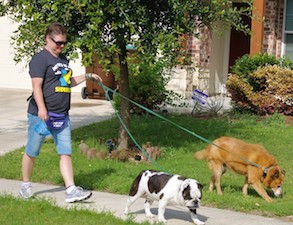
The time has come to formally let your pets meet through brief, tightly supervised face-to-face contact, during which they can become acclimated to each other’s odors and visual presence. The objective is to acclimate the new pet to the household and the current pets in a way that benefits all parties.
To ensure a smooth pet integration process, do the following:
- Start with short meetings where the pets only get to know each other for a few minutes.
- Pay close attention to how they act when they talk to each other. Look for signs of interest, like relaxed body language and a positive answer.
- Treats and praise should be given for good behavior. Positive feedback helps make a link between good behavior and getting something in return.
By keeping the first meeting short and rewarding good behavior, you are teaching your pets that being around each other is a good thing.
Note: There might be affiliate links mentioned here. We may receive a commission if you purchase a product through an affiliate link. There is no additional charge for you. Please do your own research before making any online purchases.
4.5. Collaborative Efforts
Including your pet in fun activities is a great way to build trust and create lasting memories with them. They can learn to associate positive emotions with positive interactions through games and practice. Schedule supervised playtime with new and existing pets, complete with a variety of interactive toys and activities. Chasing a toy or participating in some light wrestling are both playful activities that can help break the ice and release some steam.
Integrating pets also includes training them. To train, use a method of positive reinforcement such as rewards and commands. A sense of togetherness and collaboration can be facilitated by teaching tricks or orders to both new and existing pets at the same time.
Create a positive association by rewarding appropriate behavior with snacks and compliments during group activities. This furthers the belief that interacting with one another is beneficial.
Pets benefit from each other’s companionship and develop closer relationships when they participate in group activities together.
4.6. Food Supply and Allocation of Means
Timely feeding and careful management of available resources are two components of the progressive integration process that are crucial for reducing the likelihood of conflicts and fostering a sense of stability and predictability.
 If you want to keep your pets from fighting over food, you should feed them separately. Make sure your pets feel safe while they eat by assigning them separate locations to do so. Provide numerous locations in your home where food and drink can be found. This eliminates the incentive for any pet to act as a resource guardian, which greatly reduces the potential for conflict.
If you want to keep your pets from fighting over food, you should feed them separately. Make sure your pets feel safe while they eat by assigning them separate locations to do so. Provide numerous locations in your home where food and drink can be found. This eliminates the incentive for any pet to act as a resource guardian, which greatly reduces the potential for conflict.
If you do decide to add interactions during meals, it can be a tricky step in integrating pets. Do it under close supervision. Pets should be fed separately at first, but as they become more accustomed to each other, you can bring them closer together. Pets can live together peacefully and develop their own habits in a home where feeding and other resources are managed in a systematic way.
In a nutshell, integrating pets slowly and gradually into a multi-pet family is essential. Fostering strong bonds among your animal family members can be done through short and supervised meetings, shared activities, and careful feeding and resource management. Keep in mind that the integration process is not going to be very easy. Your patience, consistency, and vigilance may be tested as you steer your pets toward peaceful coexistence, as the level of comfort and development of each exhibit may vary.
Recognizing Difficulties and Taking Action

Adopting a new pet into a household with existing pets can be exciting, but it’s also necessary to be prepared for any difficulties, as the integration process is not going to be very easy. Recognizing and efficiently treating these issues quickly is critical to preserving peace for your pets. This part discusses typical problems that may arise during the integration process as well as solutions to those problems.
Conflict and Dominance
Disrupting the integration process and causing stress among your pets might be caused by aggressive and dominant behaviors. It is crucial to keep a tight eye on encounters and respond appropriately to any symptoms of aggressiveness.
Keep an eye out for growling, hissing, raised fur, or other hostile body postures when your pets engage with one another. As soon as you see signs of aggressiveness, you should step in to stop the situation from getting worse. Keep the animals involved in separate rooms to chill. If hostility continues or worsens, it’s best to consult a professional animal behaviorist. A behaviorist’s individualized plans of action to reduce aggressiveness and restore peace are invaluable.
By rewarding calm and pleasant behavior with rewards and praise, you can teach your pets to interact positively with one another. Taking care of issues of dominance and aggression early on will make your home a more pleasant place for your pets overall.
Location and Area

When pets are confined to a small location, competition for territory is inevitable. Conflicts can be reduced by careful resource allocation and environmental management.
Toys, scratching posts, comfy locations, and litter boxes should all be plentifully available for your pets. When resources are plentiful, competition fades away. Make sure your pets have their own private areas to go to when they need some privacy. This provides peace of mind and aids in the avoidance of territorial disputes.
Establish a daily schedule that includes eating, playing, and sleeping. Predictable habits help maintain calm and reduce stress.
Supervision: Keep an eye on shared areas and interactions, particularly at the beginning of the blending process. If territorial aggression emerges, take action. By giving each pet their own room and supplies, you can reduce the likelihood of fights over territory and foster a feeling of fairness.
Safeguarding Resources
When a pet develops an overprotective attitude about its food, toys, or sleeping quarters, we say that the animal is resource-guarding. Conflicts can be avoided, and cooperation is fostered by addressing this habit. Associate good feelings with sharing by training your pets to do so. Treat them and give them compliments while they’re using the same valuables in close quarters. Make sure both creatures are calm and relaxed before introducing precious goods. Encourage pleasant conversation and quiet behavior when you introduce people.
If you notice your pet engaging in resource-guarding behavior, try diverting its focus to another object or activity. The tension is eased, and further conflict is avoided. If resource-guarding behavior persists, an animal behaviorist should be consulted. To solve this problem, they can show you how to modify your behavior. A more cooperative and happier multi-pet household can be achieved through the use of positive reinforcement and gradual exposure to reduce resource-guarding behaviors.
In conclusion, a key component of effectively introducing a new pet into a multi-pet family is acknowledging and addressing issues. By keeping an eye out for indicators of hostility, giving pets plenty to play with so territorial disputes are kept to a minimum, and dealing with resource-guarding habits, you can make your home a pleasant place to live for everyone’s pets. Keep in mind that every pet is different and may have certain requirements or habits. With compassion, insight, and initiative, you may help your dogs overcome obstacles and develop meaningful friendships with one another that will benefit you both in the long run.
Indicators of Progress
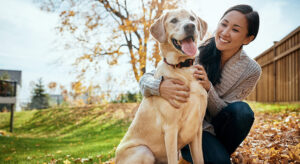
When bringing a new pet into a family with existing pets, it’s crucial to keep an eye on how everyone is getting along. The end goal of the integration process is to establish a balanced ecosystem in which all pets can live together amicably and even develop friendly bonds. Key indicators of harmonious coexistence among multiple pets are discussed here.
Playful Interactions
The appearance of playful interactions between your dogs is an endearing sign of effective integration. The ability to play comes easily and is a sign of being at ease in social situations. Keep an eye out for these indicators of playful behavior:
- Friendly games of chasing and tagging can be played between pets, with each pet having a turn as the chaser and the one being chased. Light grappling and rolling around on the floor together are expressions of fun and camaraderie.
- Play bows are a way for pets to communicate their desire to interact with their owners and other pets in a friendly manner by kneeling down in a “play bow” position.
- When pets start playing with the same toy or object together, it’s a good sign that they’re getting along well and are no longer afraid of each other.
Make sure that no pet appears scared or overwhelmed during observation of play interactions. Everyone involved in the game should be in a good mood and have fun.
Sharing Areas
When your pets are able to peacefully coexist in the same rooms without showing any signs of antagonism or tension, you know that the integration process has been a success. Keep an eye on how your pets interact with one another in different settings, such as the living room, the bedroom, the bathroom, and the area around the food and water bowls. Indicators of communal areas include:
- When pets and their owners are in close quarters, the animals tend to adopt more open and relaxed body postures. This entails a relaxed expression, loosened muscles, and a swaying tail.
- When pets play in parallel, they do things like nap and explore at the same time, but they don’t play to win or confront each other.
- Animals keep their distance from one another out of respect for one another’s personal space.
- Absence of Aggression: Lack of growling, hissing, or swatting when other animals are present.
In the beginning, it’s important to keep an eye on communal areas to make sure that good manners are maintained. Indications of successful integration are the gradual disappearance of anxiety and the growth of a shared sense of calm among your dogs.
Grooming Each Other
When pets groom each other, it’s a strong show of friendship and acceptance. When two people groom each other by licking, nuzzling, or even nibbling, it shows they are growing more comfortable with one another. When your pets groom each other, it creates a bond and fosters a sense of community in your home.
Behaviors indicative of mutual grooming include:
- Be aware of any affectionate licking going on between the pets.
- Check to see if your pets are happily nuzzling or snuggling with one another.
- Take note of any situations where your pets engage in mutual grooming.
An endearing sign that your pets are coming to embrace each other as family members is when they begin to groom each other.
Thus, the effective introduction of a new pet into a household with existing pets is characterized by friendly interactions, a sense of ease in shared surroundings, and the touching sight of reciprocal grooming. These behaviors show that your pets are getting along well with one another and possibly even bonding with one another.
As a caring pet owner, you should keep providing positive reinforcement and praise at key points along the way. It’s important to remember that every pet is different and that their rate of adjustment may vary. If you have the time, energy, and mental fortitude to learn to read these signals, you can make your home a happy and peaceful environment for all of your pets.
How to Manage Having More Than One Pet
Once you’ve figured out how to make life with many pets work, the next step is keeping everyone happy. Maintaining the health and happiness of your animal family members requires constant attention, commitment, and initiative. In this article, we’ll go over some of the most important things you can do to keep the peace in your home with multiple pets.
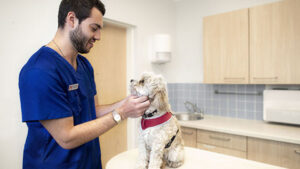
Personalized Care
- Maintaining separate care for each pet is essential, even if they are getting along well. You can avoid jealousy and neglect by giving your full attention to each of your pets.
- Spend frequent one-on-one time with each pet, engaging in activities like walks, games, grooming, or even just cuddling. This shows them that you value them immensely.
- Spending time with each pet in its own designated space allows for more opportunities for one-on-one bonding between owner and pet. You can then meet their individual requirements and preferences.
- Control Jealousy by Being Conscious of Your Reward and Attention Distribution. It’s best to keep your pets apart so that no one feels left out.
- Providing constant one-on-one time with your pets is a great way to strengthen your bond with them and show them how much they mean to you.
Schedule and Organization
- Having multiple pets in the home might be chaotic if there is no daily routine in place. Consistency and regularity alleviate anxiety and provide a sense of security for all creatures.
- Maintain a consistent feeding routine with designated feeding locations for each pet. This guarantees that no pets go hungry and that everyone stays healthy.
- Engage in regular play and engaging activities to promote healthy mental and physical development. Spending time with your pet playing games they enjoy is a great way to burn off excess energy and encourage socialization.
- Pets need their own quiet places to rest, so make sure to give them all that they need. This helps ease tension and decrease the possibility of territorial disputes.
- Maintain a regular nighttime schedule to ensure that your pet gets plenty of rest each night.
- Your multi-pet family can be calm and well-balanced with the help of a regular routine that reduces anxiety and establishes clear order.
Animal Health and Wellness
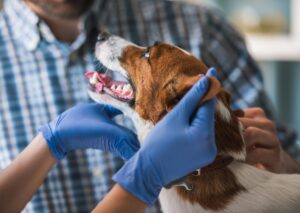
- Maintaining your pets’ physical health and mental well-being through consistent veterinary treatment is a top priority.
- Schedule frequent veterinary checkups for your pets and be sure to give them all the preventative medicine, immunizations, and health checks that the vet recommends. Getting checkups on a regular basis can help identify and treat health problems at an early stage.
- Care for your pet by keeping up with their regular grooming and cleaning schedule. In addition to improving their health, this also eliminates potential sources of friction, including poor personal cleanliness.
- Be alert for any shifts in behavior, appetite, or health while you monitor a loved one’s health. When changes in health can be detected quickly, treatment can begin sooner.
- Management of Anxiety and Stress Have a conversation with your veterinarian about how to reduce your pet’s stress and anxiety, especially if you have more than one pet. They may be able to recommend stress-relieving resources or methods.
- Providing your pets with routine veterinary care is a great way to keep the peace in your home and make sure they live long healthy lives.
Therefore, constant effort and care are required to keep the peace in a home with more than one pet. When you give each pet your undivided attention, stick to a consistent schedule, and take them to the vet on a regular basis, you create an atmosphere where they may all flourish. Your commitment as a pet owner and the strong ties you’ve established among your animal pals will shine through in how well-balanced and tranquil your household is. Keep in mind that every creature is different and that caring for them as individuals will result in a happier, healthier life for everyone involved.
Cost of maintaining a pet
| Expense Category | India (INR) | USA (USD) | UK (GBP) | Australia (AUD) |
|---|---|---|---|---|
| Food | ₹20,000 | $500 | £400 | $600 |
| Medication | ₹10,000 | $300 | £250 | $350 |
| Supplements | ₹5,000 | $200 | £150 | $250 |
| Grooming | ₹8,000 | $400 | £300 | $450 |
| Accessories | ₹5,000 | $150 | £100 | $200 |
| Products | ₹3,000 | $100 | £80 | $120 |
| Insurance | ₹15,000 | $600 | £500 | $700 |
| Dental Care | ₹7,000 | $300 | £250 | $350 |
| Total Annual Cost | ₹73,000 | $2,550 | £2,030 | $3,020 |
These estimates can vary based on the dog’s size, breed, health condition, and lifestyle. Always consult with local pet care providers for the most accurate and personalized cost estimates.
Conclusion
Adopting a pet into a household with other animals is a big responsibility that demands time, patience, and care for everyone involved. You may create a peaceful setting where pets flourish, ties strengthen, and hearts are filled with love and friendship by taking a methodical and progressive approach, focusing on positive reinforcement, and addressing challenges as soon as they arise. Never forget that each pet is an individual and that the work put into adjusting to living with more than one will pay off in spades.
FAQs
Is it important that my new pet get along with my current pets?
However, it’s more vital to think about how the new pet’s personality fits into the dynamic of your existing pets. Pay attention to how well they get along with one another, and make sure they have similar energy levels, demands, and temperaments.
I’ve recently brought home a new pet, but I don’t want my other pets to feel abandoned. What should I do?
Spend time with each pet, take them for walks, and groom them on an individual basis. By reassuring them of your continued affection, you can keep the peace in your relationship and put an end to any thoughts of competition.
When introducing my new pet to my current animal companions, should I do it all at once or gradually?
It’s best to ease into things gradually. Introduce them visually before moving on to brief, supervised face-to-face encounters. This method of introduction helps animals adjust with less stress and the potential for conflict.
When my pets interact, what should I do if I see symptoms of aggression?
Separate the animals right away to avoid a more serious situation. If aggressiveness continues, consult a trained specialist. In the long run, stress can be reduced with the use of positive reinforcement and managed interactions.
Once my pets have adjusted to their new environment, can I leave them alone?
While it’s encouraging to see integration go well, it’s still important to keep an eye on interactions, especially at the outset. As you see continued good behavior, you can gradually increase the unsupervised time.
How can I stop my pets from hoarding food or other supplies?
Instill a culture of generosity in your pet by teaching it the joys of sharing. Reward patient conduct and slowly add valuable stuff. Redirect the person’s focus and, if required, seek the advice of a professional behaviorist if resource guarding occurs.
When introducing my pets to one another, should I let them play together and share toys?
Bonding can be encouraged by engaging in constructive tasks together. To ensure safety and prevent overstimulation, however, it is important to attentively watch the first few play sessions and then progressively expand their duration.
What happens if my new pet develops health problems while in quarantine?
If you have any health problems, see your vet right away. In order to avoid the spread of any potential diseases, quarantine requires prompt diagnosis and treatment.
How can I help my pets acclimate more quickly during the acclimation phase?
The rate of integration should be one that is agreeable to all of the pets. Stress and setbacks are the result of trying to rush the process. The key to a smooth transition is patience and baby steps.
Is it typical for my pets to still have fights after we’ve finally gotten them to get along?
Pets will be pets; it’s common for them to have periodic conflicts and territorial displays. It’s all part of figuring out who’s in charge and how everyone gets along, as long as it doesn’t happen too often or get violent.




